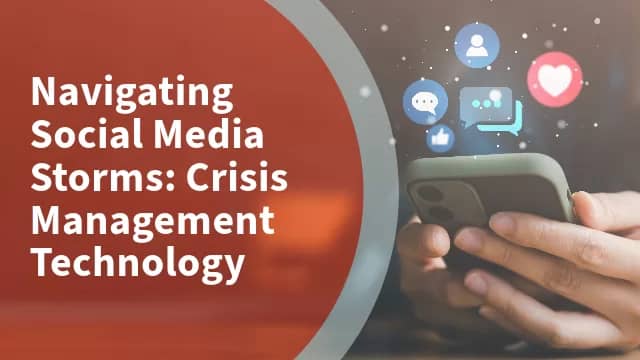In today’s digital age, where information spreads at the speed of a click, businesses face a new kind of challenge: social media storms. These storms are sudden and intense waves of public opinion that can either elevate a brand’s reputation or bring it crashing down. In such a volatile landscape, crisis management technology has emerged as a crucial tool for businesses to navigate these storms and safeguard their image. In this article, we’ll explore how crisis management technology works, its benefits, and why every business should consider adopting it.
Introduction
Social media storms can ignite unexpectedly, driven by customer complaints, negative reviews, misinformation, or controversial incidents. These storms can escalate rapidly, tarnishing a brand’s reputation and impacting its bottom line. Enter crisis management technology – a set of tools and strategies designed to detect, analyze, and respond to such storms in real-time.
Understanding Social Media Storms
Social media storms are the digital equivalent of a sudden storm that disrupts the calm. With millions of users voicing their opinions online, a single tweet or post can snowball into a massive crisis, causing irreversible damage. Being unprepared for such events can lead to prolonged negative effects on a brand’s image.
The Role of Crisis Management
Crisis management technology acts as a brand’s shield in the face of a social media storm. It involves actively monitoring various platforms to identify emerging issues, analyzing sentiment to gauge public perception, and formulating rapid, targeted responses that mitigate the situation.
Components of Crisis Management Technology
Real-time Monitoring
Effective crisis management starts with real-time monitoring of social media platforms. Advanced algorithms track mentions, keywords, and hashtags related to the brand, allowing businesses to detect potential storms as they brew.
Sentiment Analysis
Sentiment analysis tools go beyond tracking keywords – they gauge the emotional tone of conversations. This insight helps brands understand how a crisis is affecting public perception and tailor responses accordingly.
Automated Response
In the heat of a storm, immediate response is vital. Automated response systems, armed with pre-approved messages, ensure that brands acknowledge the issue swiftly and provide reassurance.
Stakeholder Engagement
Engaging with stakeholders is crucial. Crisis management technology identifies key influencers and facilitates communication with them, turning them into allies during a crisis.
Benefits of Crisis Management Technology
Swift Response
Crisis management technology enables instant acknowledgment and response, preventing negative sentiments from festering.
Damage Control
By addressing issues head-on, brands can prevent minor issues from spiraling into major crises.
Data-Driven Insights
The data collected during a crisis provides valuable insights for post-crisis analysis and future prevention strategies.
Case Studies: Successful Crisis Management
Company A: Turning Negativity into Positivity
When faced with a product recall crisis, Company A used crisis management technology to address concerns transparently, transforming negative sentiment into respect for their honesty.
Company B: Learning from Others’ Mistakes
Witnessing a competitor’s PR nightmare, Company B implemented crisis management technology proactively, protecting themselves from a similar fate.
Choosing the Right Technology Solution
Selecting the right crisis management technology is vital. Consider factors such as ease of use, scalability, and integration with existing systems.
Implementing Crisis Management: A Step-by-Step Guide
Risk Assessment
Identify potential crisis triggers unique to your industry and business.
Technology Selection
Choose technology that aligns with your needs and budget.
Team Training
Train your team to use the technology effectively and efficiently.
Simulation Exercises
Conduct mock crisis scenarios to prepare your team for real-time action.
Human Touch in a Tech-Driven World
While technology is crucial, the human element remains irreplaceable. Authentic communication and empathy are key in crisis resolution.
The Future of Crisis Management
As AI and data analysis advance, crisis management technology will become even more predictive and preventive, reducing the impact of storms.
Conclusion
Navigating social media storms requires more than just luck; it demands proactive preparation. Crisis management technology empowers businesses to weather these storms, safeguarding their reputation and maintaining customer trust.
FAQs
What is a social media storm?
A social media storm refers to a sudden surge of negative public opinion or controversy that spreads rapidly on social media platforms.
How does crisis management technology work?
Crisis management technology monitors social media, analyzes sentiment, and facilitates rapid responses to mitigate negative situations.
Can crisis management technology completely prevent crises?
While it can’t prevent crises, it helps in early detection, swift response, and effective damage control.
Is crisis management technology only for big businesses?
No, businesses of all sizes can benefit from crisis management technology to protect their brand’s reputation.
What role does human communication play in crisis management? Human communication adds authenticity and empathy to crisis resolution, creating a more positive impact.

